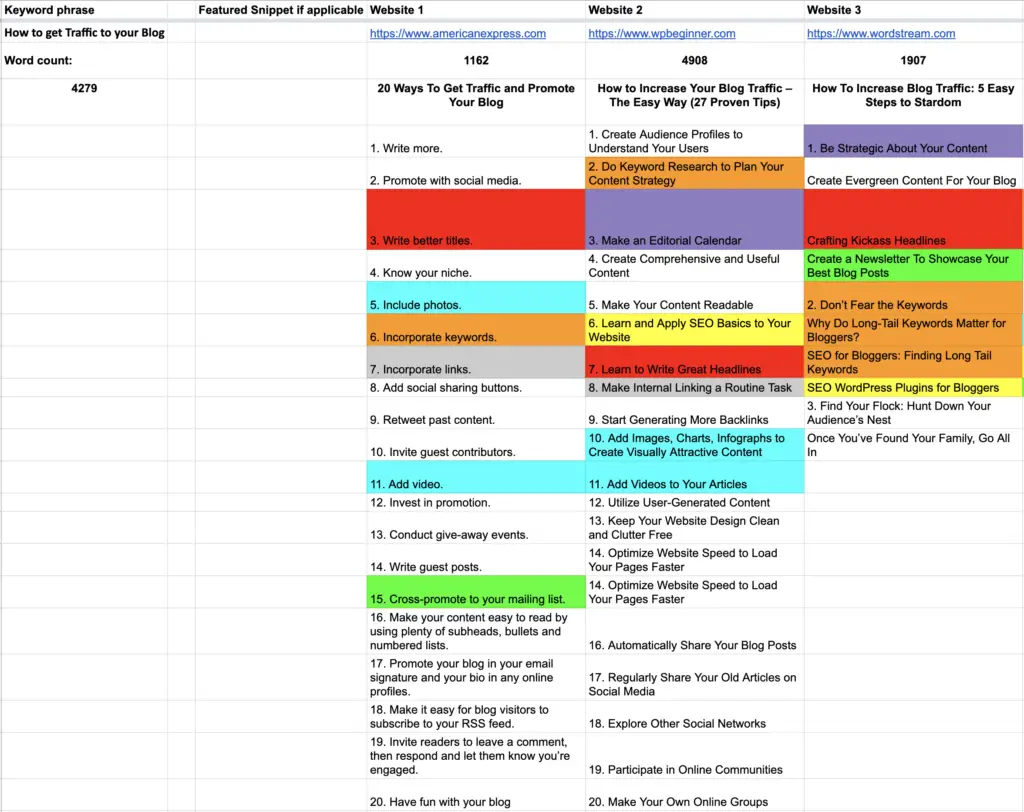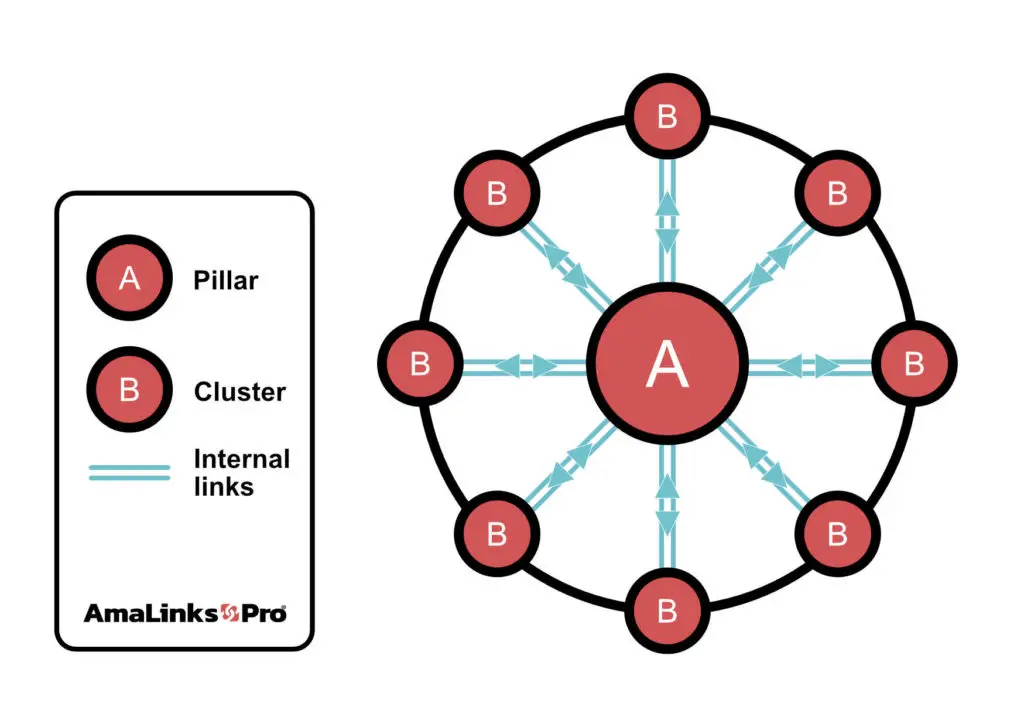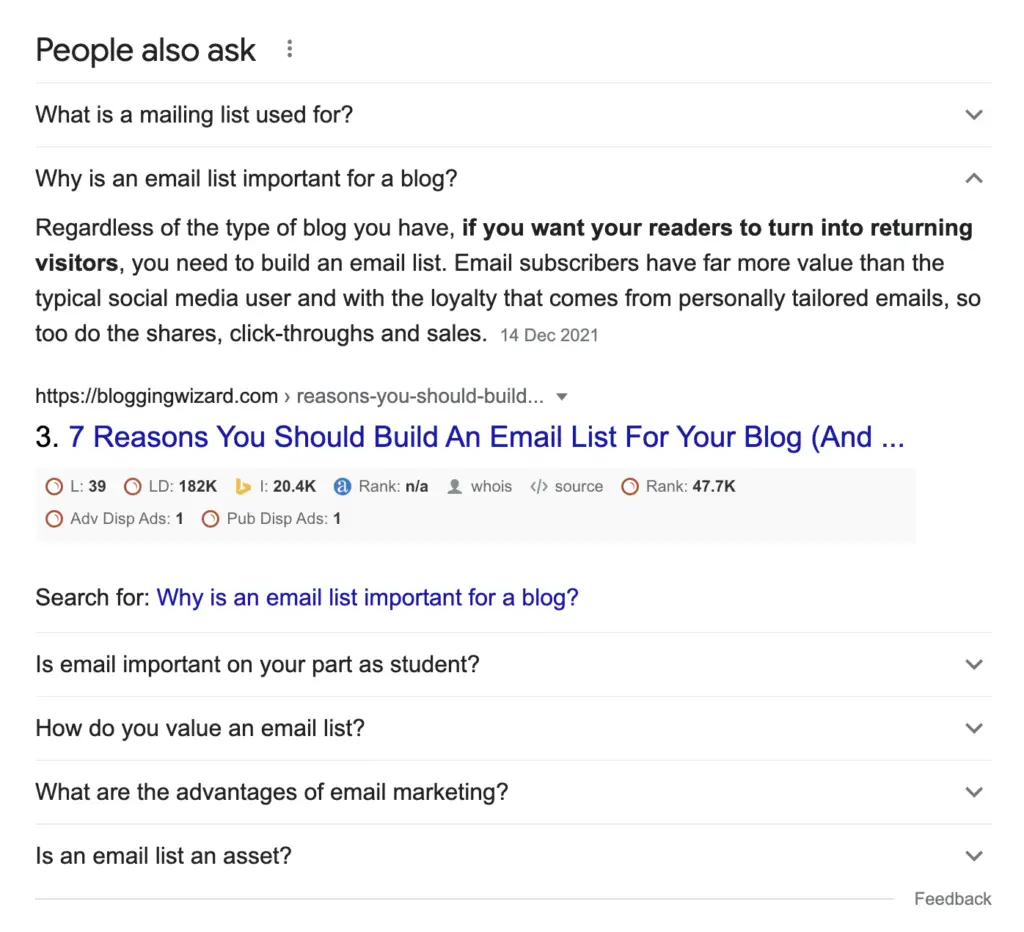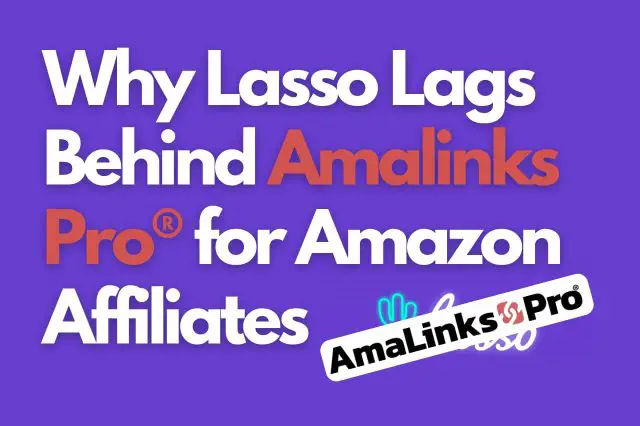Writing great content and being the most useful blogger in your space is an aspiration for many of us. But this is only half the battle. After spending all that time (or money) crafting content, we need to make sure we maximize our opportunities to drive readers to those posts. If you’re wanting to know how to get traffic to your blog and really build your audience, then this guide is for you.
The first part of this puzzle comes before you write a single word of a new blog post. In this pre-writing phase, there are many tactics that will not only help you to get more traffic to your blog, but will also help you to write much more efficiently…
1: Keyword Research
Keyword research is vital to ranking on search engines. And ranking on search engines is arguably the most powerful way to drive traffic to your blog. Getting an article on the first page of Google is the main aim, but really, to pull in the big numbers for that search term, you’ll need to rank your content in the top three.
Research from FirstPageSage gives the following click-through rates for positions 1-3 on a Google search page:
- Position 1: 39.6%
- Position 2: 18.4%
- Position 3: 10.1%
But what is the best way to do keyword research to choose keyword phrases that you can rank highly for?
Lots of people look for high search volume and a low difficulty score, and while this is a decent starting point, there are a few other elements to bolt onto this for really effective keyword research.
The key thing is to also look for sites that are ranking on page one of Google that have a Domain Authority (DA) score that your blog’s DA can realistically challenge…
2: Match to Domain Authority
You need to be smart with your keyword research and match the keyword phrases to your DA rating.
If you’re a new blogger and the DA of your site is low, you stand an almost zero chance of ranking for a search term if the DA of the top 10 sites on SERP is high.
Let’s take a look at an example. Imagine you’ve just started a new affiliate site all about the world of indoor lighting. Your site has a low DA – say 18. In the first image below we can see that the DA rating for the SERP for the keyword ‘desk lamp’ ranges from 63 to 96.

However, if we add a few more words into that search query, moving from a 2-word phrase to a 4+ word query ‘desk lamp for artist’, we can see that long tail keyword phrases are much more likely to return better looking results for us.

In the example above we can see that two of the SERP listings have a low DA – one at 25, and one at 17. If the DA of your site is 18, with a well-crafted piece of content, you should be able to take a spot on page one.
3: Long-Tail Keywords
If you’re not sure what long-tail keywords are, the ever-helpful people at Yoast have summed it up nicely:
Long-tail keywords are keywords or keyphrases that are more specific – and usually longer – than more commonly used keywords. Long-tail keywords get less search traffic, but will usually have a higher conversion value, as they are more specific. They allow you to gradually get more traffic to your site and be found by new and motivated audiences.
Using long-tail keyword phrases to get super-specific with your blog articles is a brilliant organic traffic generation strategy.
Don’t be put off by low search numbers either – they’re often not so accurate and almost certainly under-value the true number of monthly searches.
Useful Tools
4: Use Customer Avatars
Once you know what you’re writing about, you need to know who you’re writing for. Using a customer avatar is a powerful way for bloggers to tailor each post to a specific part of their target audience.
If you’re not familiar with the term, a customer avatar is a fictional person that you create who would be the ideal type of person that your blog is aimed at.
Bloggers who use this tactic will have a pool of avatars, each one reflecting a different element of their audience.
For example, if your blog is about camping and the outdoors, where you talk about gear, trips, campsites etc, you may have several different avatars to reflect a person who:
- is new to the world of camping and needs very basic advice to give them confidence for that first trip into the semi-wild.
- is a seasoned multi-day hiker who needs specific types of gear to help them on those long trips.
- is a mom or dad looking for ideas and equipment to take the family on a camping trip where the kids are safe and entertained.
Bloggers often name their avatars and create fact sheets about them. Giving your avatar a name and making them personal really helps when it comes to writing articles directed at them.
Ask yourself these questions:
- Who is your ideal customer
- What do they do for a living?
- How much do they earn?
- What do they read/watch/listen to?
- What are their interests/hobbies?
- Who do they follow on social media?
- What are their opinions and beliefs?
- What drives them?
- What do they secretly desire most?
Before writing your post, think about which customer avatar you’re writing this post for and write your content to best reach them where they are in their journey.
What are their fears, hopes, dreams, and insecurities? What would they hope to get from reading your post? Write your article for them.
In his excellent book Affiliate Content Secrets, Stephen Hockman says:
The best piece of advice I can give you … is to never lay a finger on your keyboard until you first decide who you’re targeting with your affiliate content. If you don’t start with the who then you won’t know how to write the most effective content.
This tactic can really help your post to hit the mark, making it feel like it’s written for a person and not just to rank.
If the reader feels a personal connection with your words, you’ve taken a huge step towards building their trust in your blog. And trust means people will come back, allowing you to retain your blog traffic rather than lose it.
Check out the link below to an excellent free course that really digs into this fascinating subject.
Free Course
Customer Avatar Tutorial (video)
5: Understand Search Intent
So, now we know what keyword phrase we’re targeting and who we’re writing our post for. The next step is to ask yourself what is the search intent of your avatar when they’re searching for that keyword phrase?
Search intent falls into one of these categories:
- Informational – looking for answers to a question
- Navigational – looking for a specific website (or content on a specific website)
- Transactional – looking to make a purchase
- Commercial Investigation – looking for more information before making a purchase
So, before you write, think about the kind of thing the searcher will be thinking as they search for that keyword phrase. Then look to attract traffic by addressing those kinds of thoughts/questions/problems within your content.
Do they need more information? Are they looking to buy? Are they looking for guidance before buying? Knowing this will help you to write content that matches this search intent, meaning that the traffic you get is targeted traffic.
If you give the reader answers to the questions they have, they are more likely to trust your site, sign up for your newsletter and return again in the future. All of these things add up to more traffic to your blog.
It also really helps in the next phases where we start to sketch out the initial outline of the blog post…
6: Be Structured and Efficient In Your Planning
This might sound a little dry and boring, but having clear systems and processes can really help your blog to grow – fast!
Build yourself a master folder of templates that you can duplicate for each blog post. Mine contains the following files:
- a master Google Sheet that allows me to analyze the current top 10 articles for my targeted keyword phrase (see the next point for more on this).
- a master Google Doc that will let me quickly list the article’s structure in H2’s and H3’s.
- a folder to save images into.
Having those ready-made templates and a path to a clear article outline really helps to keep the head clear and focussed, making the writing part much faster.
This means you’ll be able to write more articles and therefore pull in traffic for even more search terms!
Useful Resources
Perfect Your Editorial Process (video)
7: Research the Competition
Here is a screengrab of the Google sheet I use to write my articles (a slightly modified version of what you’ll see in the video link above).
In it, you can see that each of the top 10 articles on the SERP has a column to itself (I’ve only shown the first three), as well as one for the featured snippet if there is one.

Headers
Within each column, I’ll list the headers from that article so I can see at a glance the common themes across the articles that Google is ranking for my search term.
This tells me the headers I should definitely be including. I colour code them so I can easily see the common themes.
It’s also important to be original – don’t just copy the structure of the posts and rehash the content. Add your unique spin.
Once you’ve compiled your list of H2s and H3s, think about what you can add that is new and different. How can you make your article the most useful for your chosen avatar? What can you add that will take your content up to the next level?
Word Count
Knowing the rough word count that your article should be is also key. Ensuring your article is within the range of the top ten pieces of content means your article will hit that ranking metric, giving you the best chance to attract traffic to that post.
If you don’t use a tool that gives this information (like Surfer), you can do it manually.
Just copy and paste the content of each article into wordcounter.net and note down the number in the spreadsheet. In the above example it’s noted beneath each url.
Add all of the numbers of the top ten word counts up and divide by ten to get the average and then aim for that.
Now we’ve looked at the pre-writing sections, the next batch of tactics deals with the actual content creation phase. This is where the time you spent in the planning stages pays you back in spades…
8: Choose the Best Type of Blog Post Format for Each Post
From the research phase above you’ll already know what the top 10 articles are for your keyword phrase. Look again at those articles and see if there is an overriding type that ranks – i/e. are most of the articles formatted as ‘How To?’ posts?
It makes sense to structure your article in the style of the most commonly featured. If the results are a mixed bag of different formats, then ask yourself what type of post would work best to answer the query you’re trying to solve with your article.
Use this list of example types for inspiration:
- The How-To Post
- The Listicle
- The Curated Post
- The Thought Leadership Post
- The Fun Post
- The ‘What’ Post
- The ‘Why’ Post
- The Feature Story
- The FAQ Post
- The Interview Post
- The SlideShare Post
- The Infographic Post
- The Newsjack
- The Comparison Post
9: Utilize the Power of Topical Authority
Now you know the type of article you’re going to write as well as its structure. You also know who it’s aimed at, what their search intent is and how many words you’re going to write to answer that query in the very best way you can. There’s one more thing to think about before you can start typing furiously to craft that content. Topical authority…
What is Topical Authority?
Topical authority means that a website’s content has a wide range of related articles that cover many different aspects of a specific niche.
It’s another key metric in Google’s ranking factor, and therefore one that you need to understand to get more traffic to your blog.
Let’s say you have a blog in the indoor plant space. A narrow topical authority might just list out lots of different plants, with basic guides on how to care for them and links to useful tools and equipment.
A blog with much more topical authority might also delve into:
- the native origins of each plant
- how to propagate them
- terrariums
- different soils types and composts
- in-depth guides on how to care for them and how to cure common problems
- pots and containers
In the above example, each main article (the pillar post) can have an accompanying set of articles (the cluster posts) that cover all of the extra search queries that your keyword research suggests. The pillar links out to each of those cluster articles – and each of those cluster articles links back to the main pillar post.

Due to all of the internal links pointing at the original article, this tactic also has the added benefit of boosting the Page Authority value of the main pillar page.
Building authority within your topic or niche really allows you to harness the natural power of internally linked content allowing you to attract lots of organic search traffic.
So, plan out a cluster of articles to support a particular topic and then write them as a batch…
Learn More
How to Create an Effective Topic Cluster and Pillar Page – video
10: Learn How To Write Irresistible H1 and Title Tags
It’s time to start writing! And the most important words that you’ll write for any post are those that form the headline.
There are two types, and when it comes to getting more traffic to your blog the title tag is arguably the more important of the two. The title tag (also called meta title) is what appears on the SERP:

Title tags are the most vital part of the whole post and are vital to pulling in blog traffic.
Your content might be the best answer to a search query, but if nobody clicks through to read it, then what’s the point?
The headline has to be excellent to give your content the best chance to draw the clicks and get the traffic. It also needs to be around 60 characters in length, meaning they may be slightly different to your H1 blog post titles.
If you want to increase blog traffic then learn how to write great headlines that do the following:
- Lead with the benefit – ask yourself how the reader is going to most benefit from finding the answer to their search query. Address that benefit in your content and lead with that in your headline.
- Capture attention – your headline is going to be competing with lots of others to capture the searcher’s click. So your headline needs to stop the reader in their tracks.
- Compel – you have the reader’s attention, now you need to draw them into a click with something compelling.
You’ll also want to include a mix of the following:
- A number
- A power word
- Sentiment words (positive or negative)
Free Tools
11: Why Blog Descriptions Are Vital, Too…
After the headline, the blog description is the next most important thing.
A blog description or blog post description is a short snippet of text that appears beneath each heading on a search engine results page (SERP).
In order to write the best blog description, you need to understand its purpose.
And the purpose is simple – to compel the reader to click through to read the post.
It works in tandem with the headline – which should catch the eye and ideally make the reader want to know more without further encouragement. However, if the headline doesn’t quite sway the reader, then the blog description gives you a second chance to entice them to click.
Effective blog descriptions borrow heavily from the craft of copywriting. A compelling blog description will both hook the reader and play on their emotions to persuade them to read your article to answer their search query, therefore increasing your blog traffic in the process.
Giving a clear flavor of what the article is about is going to mean that when a blog post does drive traffic from the SERP, it will be relevant traffic.
12: The Power Of Images
Us bloggers should never underestimate the power of images in helping us to create the very best content for our readers.
A great blog post is made so not just by the words in the article, but by the images that are used to break up those blocks of text.
Adding some visual spice and interest helps to keep readers engaged – rather than turning them away with a daunting wall of text.
Here’s a little of what Google Search Central has to say on it…
Provide good context: Make sure that your visual content is relevant to the topic of the page. We suggest that you display images only where they add original value to the page. We particularly discourage pages where neither the images or the text are original content.
Optimize placement: Whenever possible, place images near relevant text. When it makes sense, consider placing the most important image near the top of the page.
Create informative and high-quality sites: Good content on your webpage is just as important as visual content for Google Images – it provides context and makes the result more actionable. Page content may be used to generate a text snippet for the image, and Google considers the page content quality when ranking images.
And…
Include descriptive titles, captions, filenames, and text for images. Google extracts information about the subject matter of the image from the content of the page, including captions and image titles. Wherever possible, make sure images are placed near relevant text and on pages that are relevant to the image subject matter.
We can see from the above that Google values the quality and relevance of both the words and images within a blog post. It’s all about being useful and helpful to the reader for the search term they’ve entered.
If your article answers the reader’s questions (by matching the content to the search intent), then your readers will most likely read the entire article.
This will mean that your bounce rate will then be low. A good bounce rate is between 26% and 40%. And this is important because the bounce rate is a ranking factor – if yours is high Google won’t look so favorably on your content.
Having a low bounce rate tells Google that your content is helpful for that particular search query. And this will help your articles to rank higher and get more traffic.
We can also see from Google’s guidelines that image content is derived from the various indicators from the context of its positioning within the article. This can help pull in organic search traffic when people search Google for images related to their query – if your image appears with a link back to your post, then it’s another way to increase blog traffic.
Below are some ideas on the types of images to include far maximum benefit.
Infographics
Other than looking cool, one of the best things about infographics is that they are highly shareable.
I once created one on my own blog about running/cycling that was picked up and shared by a national cycling account on Twitter. I got several thousand views within a few hours of it being shared. To put that into context, at the time it would have taken several weeks to get that number of views!
If the article you’re writing could benefit from an infographic, go ahead and make one, or hire a graphic designer on Fiverr – the investment will be worth it.
Useful Tools
Original Photography And Graphics
There are some great image sites out there, both free and paid for, and for bootstrap bloggers who can’t afford to hire designers and photographers, they are a hugely helpful resource.
That said, if you can create your own images, then you’re making the visuals on your articles as original and compelling as your words.
Although at present there is no ranking benefit in Google’s eyes to original images vs stock images, there is a chance that in the future originality will be rewarded. Steal a march on your competitors and start to add original imagery into your posts.
For graphics, the tools listed above will be helpful again. For photography, learn how to master the camera on your iPhone or buy a decent digital camera and get creative.
Helpful Resources
- Unsplash
- Pixabay
- iStock (paid)
- deposit photos (paid)
13: People Also Ask + Bolded Terms
Google gives us a tonne of information if we know what to look for. You’ve probably noticed the People Also Ask (PAA) section on a SERP before now:

If your article answers some or all of those questions it can help to make it more relevant in Google’s eyes for the targeted search term.
But don’t just settle for the first few PAA terms that appear, though! Pick a few that are most relevant to your article and click the little arrow next to them:

A short answer to the question will appear, but if you click the arrow again to close the answer you’ll see that more questions have appeared in the PAA box.

This handy little tip can be a gold mine of additional content, further blog post ideas or a great list of FAQs in your blog post!
Answering a lot of related questions is a great way to capture traffic for related queries as well as boosting relevance for your article.
So, once the post is written and is accompanied by relevant images, we move into ensuring that it is optimized to rank in the search engines, with these powerful on-page SEO strategies…
14: Maximize Your Internals Links
Internal linking – that is, linking your post to other posts on your site – is a great tactic for building topic authority and pulling in more search traffic.
Why is this important? Because if Google (or another search engine) can see that your site contains lots of useful related articles and information around a given subject, then those articles get a ranking boost. The higher the ranking, the more traffic will come your way.
It’s generally believed that three internal links have the same weight as one external link (more on those later). The difference here is that it’s very easy for you to add internal links to other related posts – much easier and far less time consuming than trying to get a good external backlink.
Adding internal links is also helpful to your audience. If your content is good then readers are very likely to click through to one of your other articles if it’s something that can help them.
More eyeballs on your other posts can only ever be a good thing – one post can help to drive traffic to several others.
If you don’t have an internal linking strategy, go through your old posts and try to link them to at least three other relevant posts. It’s surprising how much this can increase a blog’s traffic.
Useful tools
15: Yoast/RankMath
There are two incredibly useful on-page SEO plugins that work natively in WordPress as you write your posts. Yoast and RankMath both work in a similar way, and score your content based on various SEO and readability factors. This is the list of on-page SEO suggestions from RankMath:

And Yoast offers something similar with the added readability suggestions:


Following these guidelines (there are links out for guidance and tips from within each plugin), you can ensure all of your posts get the green light before publication, which will go a long way to help drive traffic.
Surfer
Surfer is an incredibly powerful tool that looks at the content of the top-ranking websites for a search term and suggests all sorts of headings, terms and phrases that should be included in your post – and how many instances of each to include. This is a very powerful method that really does get great on-page SEO results.
With the hugely important on-page SEO now sorted, it’s time to increase blog traffic further with these six tips and tricks for off-page SEO…
16: Promote on Social
Social media is a fantastic way of increasing exposure to your website and pulling in traffic from other sources than Google. Before I really understood SEO, this was the only way that I got the number of page views up on my blog posts!
- YouTube
- TikTok
Join groups, follow hashtags, comment on posts, and be an involved member within your niche so that when you promote your blog on social media, you’re promoting it on already fertile ground. When you get comments, reply to them and try to build up a relationship with those users.
Useful Guide
Building your social media marketing strategy for 2022
Quora and Reddit
Quora and Reddit, whilst social platforms, are different from those above and should be treated so. They’re more like online communities than personal social media channels.
Daniel Ndukwu, CEO of KyLeads, confirms that:
I’ve been a Quora user for years, and to date I’ve gotten over 5 million views on the platform. In addition to that, we’ve used it to drive thousands of visitors to our website and get our first hundred users.
Useful Guides
- Quora Backlinks for SEO (Completed Link Building Guide)
- Reddit Backlinks for SEO (Complete Link Building Guide)
A word of caution here. Promoting your website on social media is a useful secondary way to direct traffic to your content. But it should never be the only way (don’t do what I did).
If any of those social platforms ever disappear, then your traffic disappears too. Trying to rank content in search engines to attract organic traffic should always be the first and most important strategy to get traffic to your blog. And if you have time, add social media platforms to your strategy.
17: External Links
External links are harder to get but have very powerful SEO value. Writing guest posts and linking back to your own site from there is one of the easiest ways to direct traffic to your website. And if you can build a relationship with a key blogger in your space, that one back link can be exceptionally useful and really help to increase blog traffic.
But guest blogging isn’t the only way to generate external links and get referral traffic from other bloggers.
Other options to try include the Skyscraper Technique, HARO, and capitalizing on broken links… For lots of great advice on these strategies, check out the links below.
Backlink Tools and Tips
- Best backlinking tools
- How to Get Backlinks: 12 Strategies
- How to Get High Quality Backlinks in 2022 (7 New Strategies)
18: Build an Email List
In this age of social media you could be forgiven for overlooking email marketing as a way to build a business and boost website traffic. But dismissing it would be a mistake. According to Syed Balkhi, Founder of WPBeginner:
Email is the most predictable driver of growth and sales in our business. I prefer email marketing over all other traffic channels.
Pretty strong words. But Syed is not alone in his thinking and many businesses look to build an email list as soon as possible.
While your SEO-tailored content lets you maximize your potential to pull in organic traffic, your email list allows you to push new content to your existing subscribers, meaning more traffic to your blog.
How to Build an Email List
The way to build a large email list is to craft an irresistible offer to entice people to sign-up for your newsletter in exchange for their email address.
Let’s say you run a home improvements website. Your blog covers topics like how to bleed a radiator, how to wallpaper and how to lay laminate flooring.
Your pop-up offer could be tailored to match the article content.
So, for the ‘How to Bleed a Radiator’ you could offer a free downloadable pdf guide to the ’11 Plumbing Basics That Every Homeowner Should Know’.
Or for the ‘How To Lay Laminate Flooring’ article, your offer could be ‘An Easy Guide To Laying Your First Laminate floor [+ 2 Advanced Tips].
Thinking about the search intent and the avatar you wrote the article for will really help you to figure out what to put into the offer pop-up to entice those readers to sign up for your guide and forthcoming newsletters.
When thinking about how to get traffic to your blog, email lists might not be the first thing that comes to mind. But this strategy can be one of the most powerful.
19: Adverts
Where else do your avatars hang out online? Where can you reach them? If those platforms allow advertising, then they can be a great way to target an already interested group and increase traffic to your website.
Running Facebook ads has been a successful approach for many bloggers over the years, and it can still be a good platform now. For ideas and inspiration, you can look at Facebook Ad Library to see adverts that other businesses in your niche are running, too.

As well as Facebook, other places to consider include:
- Quora
- TikTok
Check out the links below to begin crafting your own ads to drive traffic to your website.
Useful References
20: Use Analytics
The world of blogging and SEO changes regularly. Google algorithm updates can dramatically alter the amount of traffic your blog posts get, and so you need to continually monitor and learn from the analytics data in order to make sure your posts continue to pull in traffic to your blog.
Algorithms aside, use a tool like Google search console to check which posts resonate with your readers – and which don’t…
Tweak Old Content
According to Oberlo, up to 90% of searchers don’t dig deeper than the first page of Google:
Chances are, if you can’t find your desired results on the first page, you’ll end up changing your query, instead of looking at the second page.
Look at Google Analytics and see which of your posts are not performing so well (i.e are not on the first SERP). Read through and see if you can figure out why.
Did you write the post with search intent and an avatar in mind? If not, consider a heavy edit to make your content shine.
Below are the main things to look for when analyzing old content – a few small tweaks can generate big changes in blog traffic and make old articles look like fresh content.
Word Count
If you don’t use a tool like Surfer, you can manually check how many words the top ten articles have by using an online counter like wordcounter.net to check.
Note down each article’s word count, add them up and then divide the total by the number of pages you looked at to get an average. If your post is too few words (or too many!), tweak the word count to match the optimum range.
Tweak The Headline + Blog Description
Is the headline compelling? Would it entice your avatar to click through? Paste your headline into a headline analyzer to see how it scores.
Check your blog description to ensure it’s both compelling and SEO-compliant.
Add New, Original Images
Freshen up your post with new images and graphics to make it enticing and visually appealing.
PageSpeed Score
Use Google’s PageSpeed insights to dig into how fast your page loads. This is a core aspect of Google’s algorithm, and it won’t matter how good your content is – if it loads very slowly it will negatively affect your rankings.
21: Understand Your Audience
Understanding who your readers are and thinking about how to optimize your content for them is crucial.
Dig down into the data and start to pad out your existing avatars or create new ones based on the data.
Tailoring both existing and new posts for those fictional people can really help to bring more traffic to your blog.
How to Get Traffic to Your Blog – The Key Takeaways
We hope this guide has given you lots of ideas that will help you increase your blog traffic.
The key thing is to try to get inside the head of your target audience. Pick an avatar from your pool, think about their search intent and then craft the very best, useful and original content that you can to help that reader find out what they need to know.
If you match the keywords you target for a DA rating you can compete with and then optimize your post for SEO – especially on-page SEO – you’ve taken great leaps towards getting more traffic to your blog.
Once you have those foundational bases covered, you can begin thinking about off-page SEO and advertising to really get all of the bases covered with your traffic strategy.
For more great tips to increase your earnings, sign up for the Level Up Series, AmaLinks Pro®’s very own Amazon affiliate masterclass!
Related Read: 25 Legitimate Ways to Make Money Blogging




